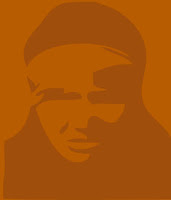Notes
La madera en el arte taino de Cuba
Created by Miguel Sague Jr Aug 22, 2024 at 2:46am. Last updated by Miguel Sague Jr May 5.
AKWESASNE NOTES history
Created by Miguel Sague Jr Jun 12, 2023 at 4:15pm. Last updated by Miguel Sague Jr Jun 12, 2023.
registration form art all night Pittsburgh
Created by Miguel Sague Jr Apr 17, 2023 at 10:58am. Last updated by Miguel Sague Jr Apr 17, 2023.
Events
-
Lesley-Ann Brown
- Copenhagen
- Denmark
- Share on Facebook MySpace Tweet
- Blog Posts (2)
- Discussions (5)
- Events
- Groups
- Photos (21)
- Photo Albums
- Videos (2)
Lesley-Ann Brown's Discussions
Whaledreamers
1 Reply
Started this discussion. Last reply by adem medina cardona Sep 26, 2008.
New from the BBC
1 Reply
Started this discussion. Last reply by Lesley-Ann Brown Sep 24, 2008.
Privatization of Land in Indigenous Communities in Latin America: Tenure Security or Social Security
2 Replies
Started this discussion. Last reply by Lesley-Ann Brown Sep 20, 2008.
RSS
![]() Loading feed
Loading feed
Lesley-Ann Brown's Page
Profile Information
- About Me:
- Author of "Decolonial Daughter: Letters from a Black Woman to her European Son" - a book that examines, through letters the impact of colonialism on Indigenous and Black communities in the Caribbean. Using the author's personal lineage as a map, Decolonial Daughter shows that history is now.
- Occupation:
- Writer
- Education:
- BA in Writing & Literature, The New School, NYC
- Contact Information:
- blackgirlonmars@gmail.com
- Research Interests:
- Caribbean History and Indigenous Cultures the world over. Pre-colonial and Post-colonial.
- Publications:
- Decolonial Daughter: Letters from a Black Woman to her European Son (Repeater Books, 2018).
- My Website:
- http://blackgirlonmars.blogspot.com
Immigrant Mother
Lesley-Ann Brown's Videos
Lesley-Ann Brown's Blog
Bureau 39--Call for Submissions

Bandit Queen Press is Proud to Present
The first edition of the zine
Bureau 39: The Ultimate Weapon
This is an Open Call for Complete and Utter Submission:
Bureau 39 wants your creation:
Writing (creative or otherwise); illustration, photography.
Send in your creative response by July 31st , subject line "Bureau 39" to… Continue
Posted on June 23, 2008 at 3:41pm
The Mothers of Memory--Chapter 3
Posted on April 6, 2008 at 5:00pm
© 2025 Created by Network Financial Administration.
Powered by
![]()

Comment Wall (29 comments)
You need to be a member of Indigenous Caribbean Network to add comments!
Join Indigenous Caribbean Network
Good day,
I picked interest in you after going through your short profile and demanding it is necessary for me to write to you immediately. I have something very important to disclose to you, but I found it difficult to express myself here, since it's a public site.Could you please get back to me on (ronaldmorr001@gmail.com) for full details.
Best regards,
Good day,
I picked interest in you after going through your short profile and demanding it is necessary for me to write to you immediately. I have something very important to disclose to you, but I found it difficult to express myself here, since it's a public site.Could you please get back to me on (ronaldmorr001@gmail.com) for full details.
Best regards,
sound file
AtaBey_Song.wav
text file lyrics:
SONG_TO_ATA_BEY.doc
Song of Yoka Hu the celestial father spirit, the spirit of Life and Energy, the spirit of the Sun and the soul of the yuca plant
sound file
Yoka_Hu_song.wav
text file lyrics:
SONG_TO_YOKA_HU.doc
Song dedicated to the spirits of the four directions South, West, North and East
sound file:
Four_Directions_Song.wav
text file lyrics:
SONG_OF_THE_FOUR_DIRECTIONS.doc
Song dedicated to the fact that the menstrual cycle that manifests in the body of human women is reflected in the monthly lunar cycle of the Cosmic Mother
Sound file:
Sacred_Words_of_the_Mon_Ceremony.wav
text file lyrics
SONG_OF_THE_FULL_MOON_CEREMONY.doc

rooster clan visiting from next door (Governor's Harbour, Eleuthera, BAHAMAS)yes1, ...we've met b4 & i think it was in philly, maybe from pam africa. wonderful 2 c u here! holla@ me.
raiseculture
take care & be cool drew
on the environmental round table. we love to hear your comments
View All Comments